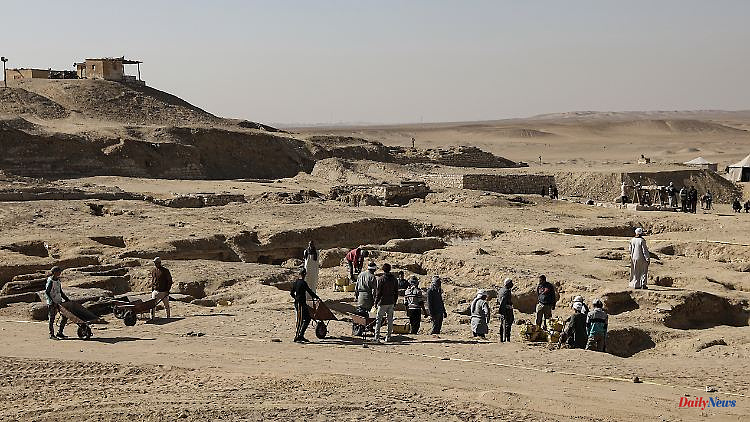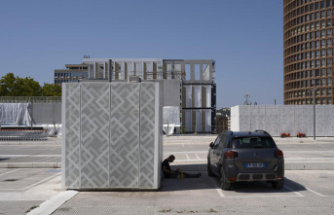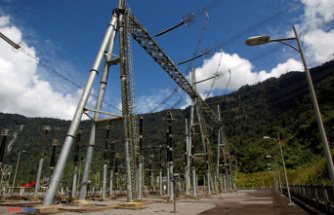Egypt has presented impressive archaeological finds in recent years, but the most recent one might top them all: a 4,300-year-old mummy adorned with gold leaf has wowed archaeologists near Cairo. The coffin is "just as the ancient Egyptians left it".
Egypt has presented new archaeological finds from the ancient necropolis of Saqqara. The more than 4,000-year-old finds at the necropolis south of Cairo are a gold-studded mummy and four tombs, including that of a "secret guardian" of the ancient Egyptian king, according to archaeologist and former Egyptian antiquities minister Sahi Hawass journalists said.
The finds are therefore from the years 2500 to 2100 BC and were assigned to the fifth and sixth pharaoh dynasty. The largest of the four tombs was built for a priest and overseer named Khnumddschedef, Hawass explained. Decorated with scenes of everyday life at the time, it was discovered in the pyramid complex of Unas, the last king of the Fifth Dynasty, who reigned some 4,300 years ago.
Another tomb belonged to Meri, who, according to Hawass, served as the "secret guardian" of the pharaoh. It was a priestly title borne by a high-ranking palace official, giving him the right to perform certain religious rituals.
The third tomb, according to Hawas, was built for a priest named Messi in the pyramid complex of Pharaoh Pepi I, and the fourth belonged to a judge and scribe named Fetek. The head of Egypt's Supreme Antiquities Council, Mostafa Wasiri, said Fetek's tomb contained the "largest statues" ever discovered in the area.
The Saqqara Necropolis is a vast necropolis on the site of Egypt's former capital, Memphis. The Unesco World Heritage Site includes more than a dozen pyramids and ancient Christian Copt monasteries.
The mummy, whose discovery is now being celebrated as a sensation, was found in a limestone sarcophagus, according to Hawass. The coffin was in a 15 meter deep ditch and was sealed "just like the ancient Egyptians had left it 4,300 years ago".
Decorated with gold leaf, the mummy is the remains of a man named Hekashepes. Hawass stressed that it was one of the best-preserved mummies of a non-royal body ever found in Egypt.
Egypt has presented a large number of archaeological finds in recent years. Critics warn that this is more about media attention than sound research.
In fact, after years of political instability and the corona pandemic, Egypt, which is stuck in an economic crisis with its archaeological treasures, wants to boost tourism, which is so important for the country. By 2028, the mark of 30 million tourists per year should be reached. That is 13 million more annually than before the corona pandemic.
(This article was first published on Friday, January 27, 2023.)












